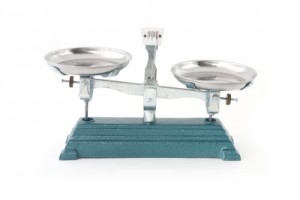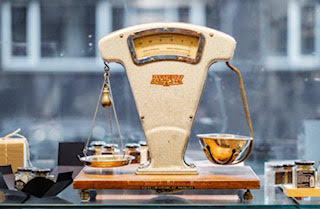Below is my blog post for Huffington Post “Drop a few sizes with these simple portion-control tricks.”
You can also read it HERE.

With the start of the New Year, losing a few pounds is often high on many people’s “to do” list. You may even be thinking of trying the latest fad diet, a version of the Paleo diet, or a juice cleanse.
Having spent the past 20 plus years counseling people trying to shed unwanted pounds, I know that losing weight is the easy part. Keeping if off and developing long-term healthy habits you can stick with is a far greater challenge.
If you have previously read my advice to dieters, you know that practicing portion-control is, in my opinion, by far one of the simplest and most effective ways to shed unwanted pounds for good. Ultimately, regardless of which method you try, in order to succeed at weight loss, you have to eat fewer calories.
Many fads work initially because you end up eating less, often because you omit entire food groups from your diet. By practicing portion control, however, you get to eat the foods you love (just not huge amounts every day) without cutting out certain food groups entirely. In my opinion, this is a much healthier and balanced approach. And, with a bit of planning, if you choose your foods wisely, you can often even eat more.
I’ve rounded up some portion-control tricks which can help you get 2016 off to a great start and help you shed unwanted pounds. Many of these tricks are rooted in behavior change which serve as cues to gently remind us to eat mindfully…to eat when hungry…to eat more slowly…and to eat less.
1. Go retro.
If we can return to eating smaller portions like we did several decades ago, we’d probably be a lot thinner. Back in the 1950s, portions were smaller and so were we. I’ve spent a good part of my career tracking how our food portions have grown — and how our waistlines have too. Rates of obesity increased as portions rose. This CDC graph, based on my research, illustrates this point. Large portions have more calories than small portions, so if we can trim our portions, we can cut out lots of calories which can help us to lose weight.
2. Eat a small breakfast.
I recommend that dieters eat within two hours of getting up. It doesn’t have to be a huge feast though. In fact, a smaller breakfast may actually be best. A study found that dieters who ate a small breakfast, as opposed to a large one, ended up eating less over the course of the day. Often, we think if we eat a big breakfast, we’ll eat less for lunch or dinner. Unfortunately, it doesn’t always work out that way.
My takeaway message is: eat a light meal in the morning. If you are not much of a breakfast eater, no worries. Make it a brunch and ok to eat something small. I suggest you include protein and fiber, which help you feel full. Some of my favorites are a Greek yogurt and berries, a slice whole grain toast with a thin schmear of peanut butter, or a bowl of oatmeal with chopped walnuts or a little milk.
3. Cut your pizza pie into smaller pieces.
We tend to eat in units. Most of us don’t share a slice of pizza, a bagel, or a soda (or other foods which come in units) with a friend. Instead, we tend to eat the whole thing. An interesting study offers up this trick: cut your pizza pie into smaller pieces and you may end up eating fewer calories. In this particular study, when a pizza pie was cut into 16 slices — instead of the typical 8 slices — people ate less. I invite you try it.
4. Beware the health halos.
So often we get caught up with labels such as “low-fat,” “gluten free,” and “organic.” Many of us also think that if a food is good for us, we can eat as much as we want. This study found that people who thought alcohol was heart-healthy drank nearly 50% more alcohol than those who did not.
My suggestion for 2016: keep an eye on your portion size even if you think a food may be good for you. Low-fat cookies are still cookies and gluten-free crackers are still crackers. And both products do indeed contain calories which add up pretty quickly.
5. At times, you can eat more to weigh less.
Good news if you are a volume lover. As I referred to them in my book, The Portion Teller Plan, volume eaters like a large portion of food. A solution: fill up on fruits and veggies which tend to be low in calories (while also being nutritious.) Good options include berries, melons, citrus fruit, leafy greens and, cruciferous vegetables such as cauliflower and broccoli. Enjoy a large colorful salad. Just ask for the dressing on the side.
6. Souper-size it!
I am a huge fan of eating soup and “souping” seems to be a popular trend these days. What I like most about including soups in your diet is that they are filling and often times, you can eat a large portion without too many calories. In fact, people who eat a large vegetable-based soup as an appetizer often end up eating fewer calories at the rest of the meal. My favorites — minestrone, tomato kale, lentil soup, and white bean. Several caveats: skip the cream soups and go easy on salt.
7. Take out the measuring cups once in a while.
It’s a great idea when you are eating at home to occasionally measure out your food to get an idea how much you typically eat. While it is not exactly practical to measure your food when you are eating out, and I don’t suggest you weigh your food daily, finding out just how big — or small — your portion is can be quite an eye opener. For example, I’ve had clients pour their typical ready-to-eat cereal into their oversized bowl and think they are having one serving, or around one cup. After measuring it out, they are shocked that their “healthy” cereal portion is closer to three cups. Yikes!
8. Take a look at your hand.
While you don’t always have measuring cups with you, you always have your hand. Which is why I created the “handy guide” to estimating your portion size. A 3 ounce portion of meat or chicken looks like the palm of your hand and a fist looks like 1 cup pasta or rice. This method is not an exact science, but does come in handy.
9. Downsize your food packages.
Considerable research has found that we eat more if our packages are larger. Instead of surrounding ourselves with temptation, I suggest buying single-serving packages or pre-portioning your favorite snacks and putting them into baggies which you can grab when you are hungry.
10. Slow down.
When we eat more slowly, we tend to eat more mindfully, and, in turn, eat less. One way to slow down is to count your bites. A small study found that study subjects who cut their daily bites by 20 percent lost around 3.5 pounds in a month. While counting your bites may not be the most pleasurable thing to do, especially if you are hoping to enjoy your food, paying attention to how many bites you are taking ultimately slows you down which leads to eating less. While I don’t suggest you count your bites regularly, it may be ok to try once in while.
11. Eat off of grandma’s dishes.
Food portions are not the only things that grew over the years — our plate sizes have too. And research has found that we eat more if plates or glasses are large. A solution: use grandma’s dishes. A client of mine did this and lost 20 pounds, effortlessly. If we downsize our plate, we tend to eat less. A small looks bigger on a smaller plate. I invite you to eat a salad of of a big plate and a pasta or meat dish off of a smaller plate. This study found that halving plate size led to a 30 percent reduction in amount of food consumed.
12. Commit to cooking more in 2016.
When we cook, we often make healthier food choices. A recent study found that cooking was associated with a slightly lower risk of developing type 2 diabetes. The researchers also found that in eight years of follow-up, those who ate more home-cooked meals had smaller weight gains and a lower risk of obesity. These findings don’t surprise me. Restaurant portions tend to be larger than amounts we would typically prepare at home. Foods eaten out also tend to be more caloric than home cooked meals.
We would love to hear portion-control tips that have worked for you.
Here’s to a happy — and healthy — 2016!
Follow Dr. Lisa Young on Twitter: www.twitter.com/drlisayoung



